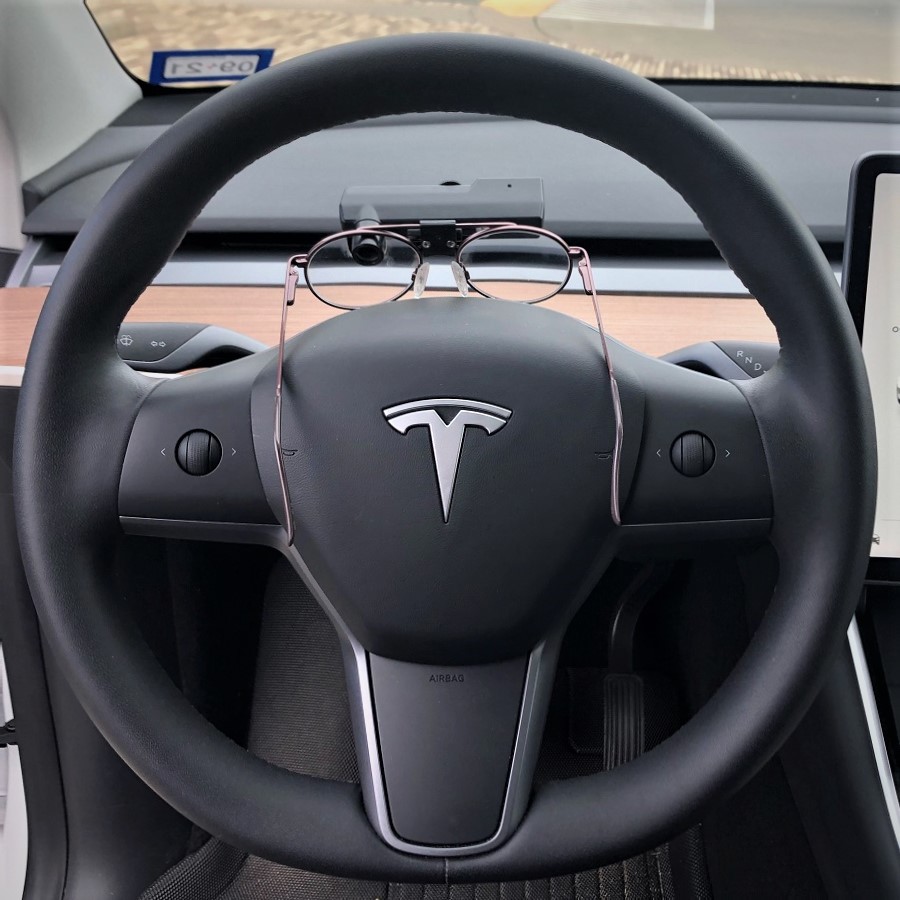ERI Publishes Documented Case of a Driver Who is Low Vision Using Car Automation Features
By Holly Herring • May 02, 2022

Blog Content
We know that when a person starts to lose their vision, their number one concern is about their ability to drive. For nearly three years at the Gigi and Carl Allen Envision Research Institute (ERI), Jing Xu, Ph.D., has been exploring how to help adults with vision loss continue to drive. Now, Dr. Xu has published the first documented case study of a driver who is visually impaired successfully using assistive and semiautonomous driving technologies in a Tesla Model Y car. The full clinical research report was published in the April Issue of Optometry and Vision Science by the American Academy of Optometry.
Through a collaboration with the Bicknell Envision Vision Rehabilitation Center, Dr. Xu learned about a 53-year-old patient with Stargardt disease and 20/182 acuity who desired to be able to drive safely and independently again. For the case study, Dr. Xu researched the patient's driving habits, adaptive strategies and use of bioptic telescope along with assisted driving features in the Tesla Model Y. Since purchasing the Tesla Model Y equipped with the self-driving package in 2020, the patient has driven more than 10,000 miles including a 1,700-mile road trip across multiple states where no accidents or incidents were reported. The patient often used the voice control function to help compensate for the car’s inaccessible interface and used a phone magnifier app, while the car was stopped, to navigate the touchscreen dashboard. The study found that codriving with these features allows him to confidently drive more often and to avoid less situations than he used to.
“I’m honored to have studied this individual, alongside Karen Kendrick at the Envision Vision Rehabilitation Center, who is losing his vision, but still striving to keep his independence,” said Jing Xu, Research Associate, Envision Research Institute. “With the advancement of technology, continued research, and now strong evidence from the case study, we’re making great strides to give people who are blind or visually impaired back their ability to drive safely and independently.”
Read more at envisionus.com/news.